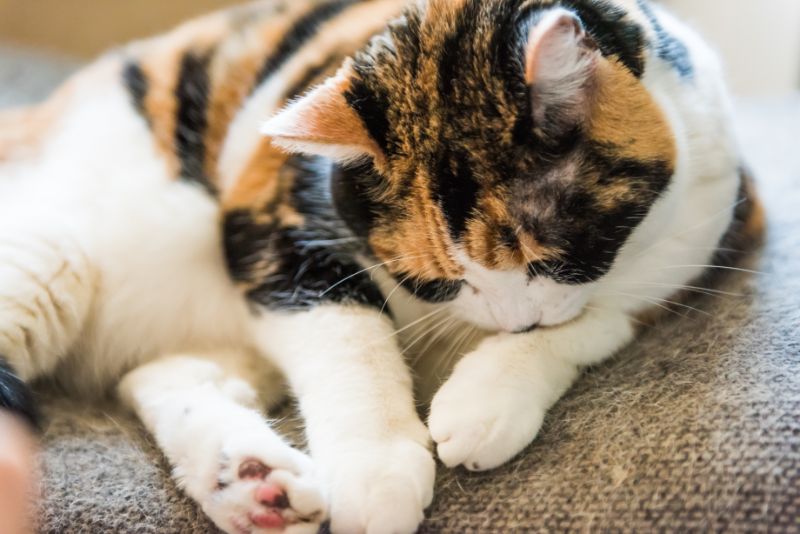Blog
Cats and Hairballs

Did you know that cats spend 15 to 50 percent of their day grooming themselves? With that amount of grooming, hairballs will form.
Depending on your cat’s breed and grooming habits, you might find hairballs appearing quite regularly, leading you to wonder if this frequency is typical for them.
Let’s take a closer look at hairballs. What are they? What causes them? How do you prevent them?
What Are Hairballs?
Hairballs form when cats groom themselves. Their tongues, covered in tiny, backward-facing barbs, act like a brush. These barbs catch loose fur, which the cat then swallows. While their digestive system can usually process most of this hair, some of it may remain in the stomach. Because cats can’t properly digest hair, it can clump together, forming what we know as a hairball. Eventually, the cat will expel this clump by throwing it up.
What Causes Hairballs In Cats?
Despite their ick-factor, hairballs show that your cat’s instinct to groom is working exactly as it should.
When cats groom, the tiny barbs on their tongues trap loose fur, which is then ingested. While most of this hair travels through their system without issue, some can remain in the stomach and clump together, forming a hairball. To expel it, cats typically vomit. Due to the narrow passage of the esophagus, these hairballs are often elongated and tube-like rather than round.
Longhaired Cats vs Shorthaired Cats
Certain breeds, such as the Maine Coon and the Persian have a higher tendency to develop hairballs. With the exception of hairless cats, all cats can develop hairballs.
Cat Super Groomers
Cats often show affection by grooming their housemates, be it other cats, dogs, or any other furry companions. While this behavior is endearing, if your cat is prone to hairballs, consider who they’re grooming. Their digestive system isn’t built to handle the volume of fur they might ingest while lovingly tending to a fluffy friend like a Collie or Golden Retriever.
Preventing Hairballs
While you can’t entirely eliminate hairballs in cats, there are definitely effective strategies you can use to minimize how often they occur or reduce their severity:
Regular Grooming
One of the most effective ways to combat hairballs is by reducing the amount of loose fur your cat can swallow. Daily combing or brushing achieves this beautifully and offers a special bonding time for you both. Regular visits to a professional groomer for grooming and potentially a haircut (particularly beneficial for long-haired cats) every six months can be a great alternative.
Cat Food Formulated for Hairballs
If your cat regularly struggles with hairballs, exploring cat foods specifically created to minimize this problem is a smart move. Numerous brands offer such formulas, often enriched with things like extra fiber, oils, and key minerals and vitamins. These ingredients work together to help the hair your cat swallows move more easily through their digestive tract. When choosing a food, check the ingredient list for a good source of fiber.
Add Fiber
For good digestive health, cats also need fiber, though in different amounts than humans. Interestingly, a little extra fiber can be helpful in preventing hairballs by aiding the smooth passage of hair through their system. When considering adding fiber, remember to do so in moderation and choose cat-safe options:
- Cat grass
- Pumpkin (or pumpkin powder)
- Cooked apples (without the core or seeds)
- Cooked carrots
Important Note: Always introduce new foods to your cat gradually and in small quantities to avoid digestive upset. If you have any concerns about your cat’s diet or hairball issues, it’s always best to consult with your veterinarian. They can provide personalized recommendations based on your cat’s specific needs.
We’re Here to Help
If you have questions or concerns about your cat’s health or behavior, we encourage you to schedule a wellness exam. Our staff at 10 West Bird & Animal Hospital are always here for you, and look forward to hearing from you.
